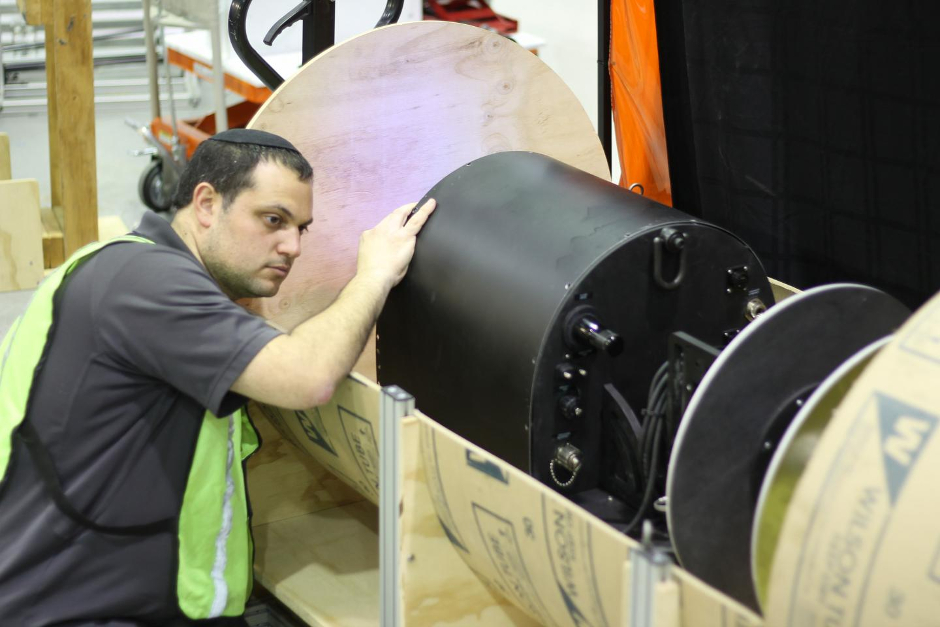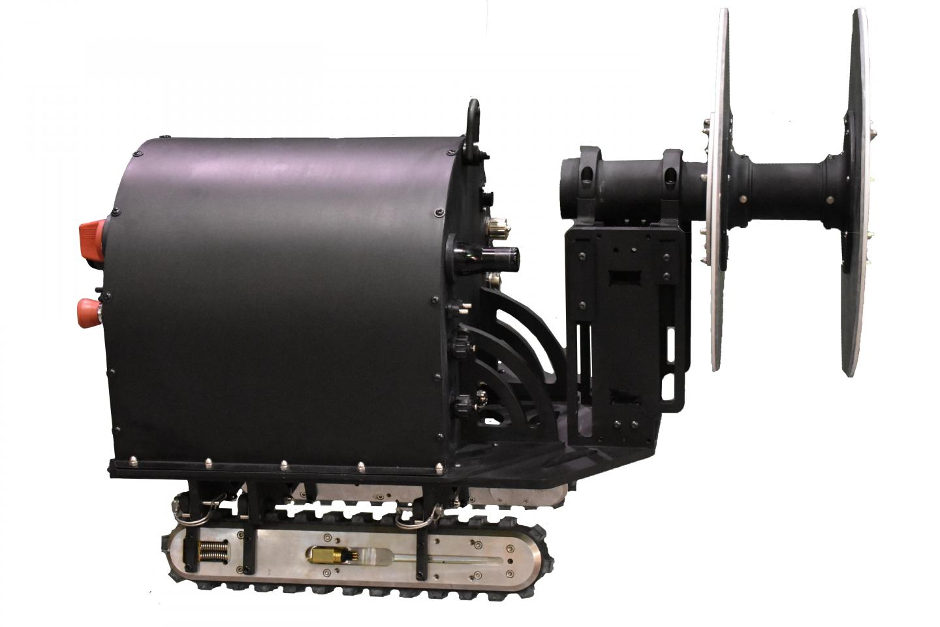
Autonomous robots equipped with disc-collimated radiation sensors are set to carry out inspections for uranium deposits at a former uranium enrichment plant in the US.
Developed by Carnegie Mellon University's Robotics Institute, the pair of robots will manoeuvre through miles of pipes at the US Department of Energy's former plant in Piketon, Ohio, to identify uranium on pipe walls.
According to CMU, the robot has demonstrated it can measure radiation levels more accurately from inside the pipe than is possible with external techniques, a factor that can reduce labour costs and reduce hazards to workers who otherwise take external measurements by hand.
"This will transform the way measurements of uranium deposits are made from now on," said William "Red" Whittaker, robotics professor and director of the Field Robotics Center.
Heather Jones, senior project scientist will present two technical papers about the robot on March 21, 2018 at the Waste Management Conference in Phoenix, Arizona. CMU also will be demonstrating a prototype of the robot during the conference.
CMU is building two so-called RadPiper robots and will deliver the production prototype units to DOE's 3,778-acre Portsmouth site in May. RadPiper employs a new disc-collimated radiation sensor invented at CMU. The CMU team, led by Whittaker, began the project last year and worked with DOE and Fluor-BWXT Portsmouth, the decommissioning contractor, to build and test a prototype.
Closed since 2000, the Portsmouth plant began operations in 1954 and produced enriched uranium, including weapons-grade uranium. With 10.6 million square feet of floor space, it is DOE's largest facility under roof, with three large buildings containing enrichment process equipment. The process buildings contain over 75 miles of process pipe.

Finding the uranium deposits, necessary before DOE decontaminates, decommissions and demolishes the facility, is a significant task. In the first process building, human crews over the past three years have performed more than 1.4 million measurements of process piping and components manually.
"With more than 15 miles of piping to be characterised in the next process building, there is a need to seek a smarter method," said Rodrigo V. Rimando, Jr, director of technology development for DOE's Office of Environmental Management. "We anticipate a labour savings on the order of an eight-to-one ratio for the piping accomplished by RadPiper."
RadPiper will operate initially in pipes measuring 30 inches and 42 inches in diameter and will characterise radiation levels in each foot-long segment of pipe. Those segments with potentially hazardous amounts of uranium-235 will be removed and decontaminated. The vast majority of the plant's piping will remain in place and will be demolished along with the rest of the facility.
The tetherless robot is said to move through the pipe at a steady pace using its flexible tracks. Though the pipe is in straight sections, the autonomous robot is equipped with a lidar and a fisheye camera to detect obstructions ahead, such as closed valves, Jones said. After completing a run of pipe, the robot automatically returns to its launch point. Integrated data analysis and report generation frees nuclear analysts from time-consuming calculations and makes reports available the same day.
The robot's disc-collimated sensing instrument uses a standard sodium iodide sensor to count gamma rays. The sensor is positioned between two large lead discs. The lead discs block gamma rays from uranium deposits that lie beyond the one-foot section of pipe that is being characterised at any given time. Whittaker said CMU is seeking a patent on the instrument.




Glasgow trial explores AR cues for autonomous road safety
They've ploughed into a few vulnerable road users in the past. Making that less likely will make it spectacularly easy to stop the traffic for...